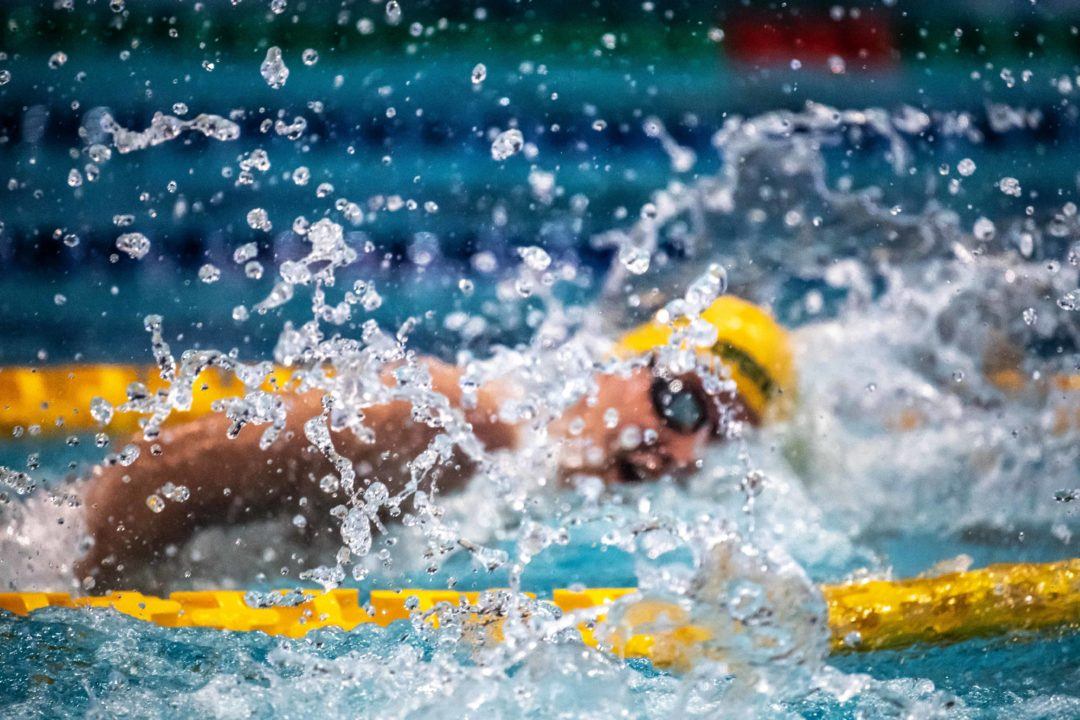Courtesy of Ritter Sports Performance
As a coach or a swimmer, you spend a lot of time trying to perfect your stroke, your strategy, and your performance. However, when is the last time you popped the hood on your movement quality and really assessed what is going?
If you can’t remember the last time you assessed your movement quality, you’re leaving major performance potential on the table. You’re also setting yourself up for the injury bug, which no swimmer wants to catch.
When swim coaches hear the word “assessment,” I can almost feel the aversion starting to kick in. Coaches fear they don’t know what to look for or that they don’t know how to properly assess their swimmers’ movement quality.
Don’t overcomplicate things! Assessment doesn’t have to be rocket science. Assessment needs to be something that is efficient, provides meaningful data, and is backed by a program that stimulates the needed change.
Efficient
We don’t want to take too much time away from water based training, so an assessment needs to be quick and simple to score. Make it easy and break things into three levels. A “0” means your athletes experience pain with the movement. A “1” means they can complete the movement without pain but struggle with the movement. A “2” means they can complete the movement at an injury preventing level.
This simple scoring system will expedite assessment and provide meaningful data to build a program for change. Let’s use an upright dowel lunge as an example.
This is a great test for many indicators of performance and a simple scoring system. Based on this data, you can select proper exercises to fix underlying performance limiters.
Lunge Scoring
0=pain
1=loss of balance
2=ability to stay upright
Meaningful Data
Make sure you know what you are assessing. There’s no rule that one exercise needs to be used for assessment over another. Just like test sets in the water, if you know what it measures then use it!
Meaningful data is also achieved by completing the test in the same fashion each time you assess. Use the same standards each time to get the best information for your program development.
One of my favorite tests to complete with swimmers is the bodyweight squats in a minute test. This is an awesome way to simulate who is going to struggle with hydrogen ion build up late in a race. Ideally, a swimmer should be able to maintain a one squat a second pace or better. If a swimmer can execute one squat a second, you probably don’t have to worry about them tightening up late in a race and dying out. If a swimmer is unable to maintain one squat a second pace, they probably have a really hard time closing out their races.
With this meaningful data, you can tweak your water-based training and push hydrogen ion buffering to a higher level needed for performance. It is a simple test that provides major insight to what your athletes are experiencing.
If you are the one administering this test, also watch for changes in their form. When do they start compensating for fatigue? This is exactly when it will happen in the water also.
Program
After assessing and collecting some meaningful data, it is time to build a program to stimulate change. What did you notice from the assessment? What exercise is going to help fix that movement pathway?
Over time you can develop exercise groupings that will help you expedite this process. Let’s go back to the lunge example from earlier. When assessing a swimmer, you notice that she loses balance and her knees move side to side.
Using a stabilization lunge will challenge the swimmer to think about stability and control of her hips and knees. The band resistance will highlight imbalances and act as a self-correcting exercise. Learning to stabilize the hips and knees will transfer to a stronger kick and a more dynamic body position in the water.
Adding in the 3-way balance tap, will add a focus on coordination and balance. This will challenge the swimmer to control knee positioning during complex ranges of movement. Mastering this skill will also transfer to efficient force in the water.
Do You Assess?
If you complete assessments right now, awesome! Keep doing them and learning more about your swimmers.
If you don’t implement assessments, take a look at our Swim Performance Screen. With the help of physical therapist, Kendal Jacobson, we were able to design a screen and program that will take your athletes from injury fearing to injury preventing to performance achieving!
About RITTER Sports Performance
RITTER Sports Performance helps swimmers go faster and coaches get better, worldwide. Through our online resources on strength training, stroke technique, swim-training, race analysis or nutritional coaching–RITTER is ready to help you take your swimming to the next level. Are you?
CONNECT WITH RITTER SPORTS PERFORMANCE:
RITTER Sports Performance is a SwimSwam partner.

